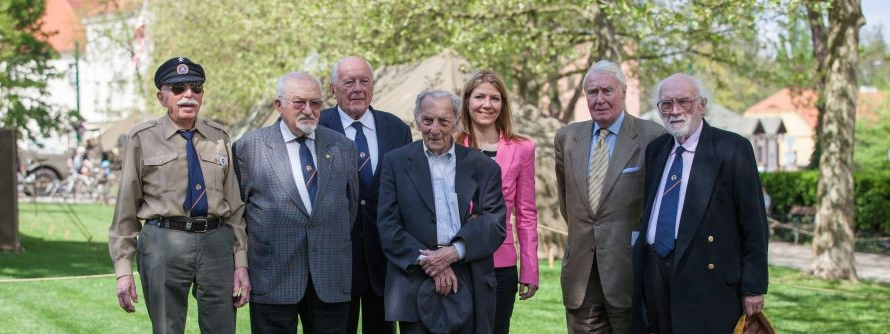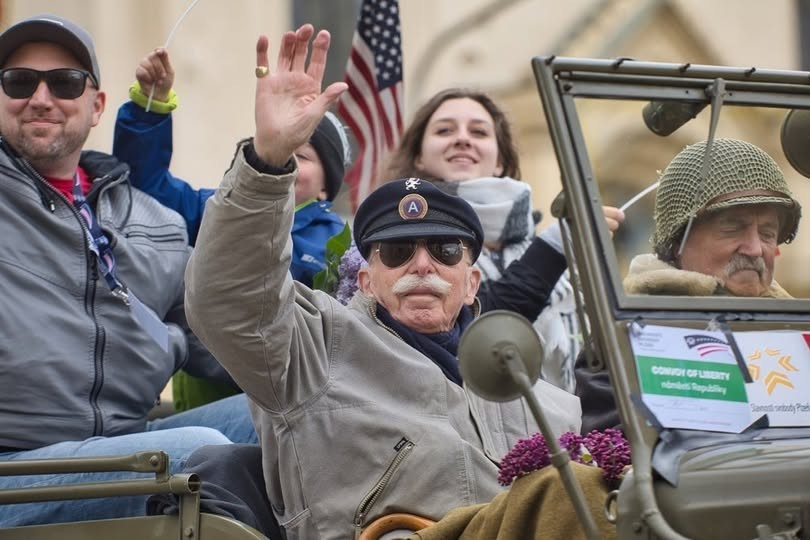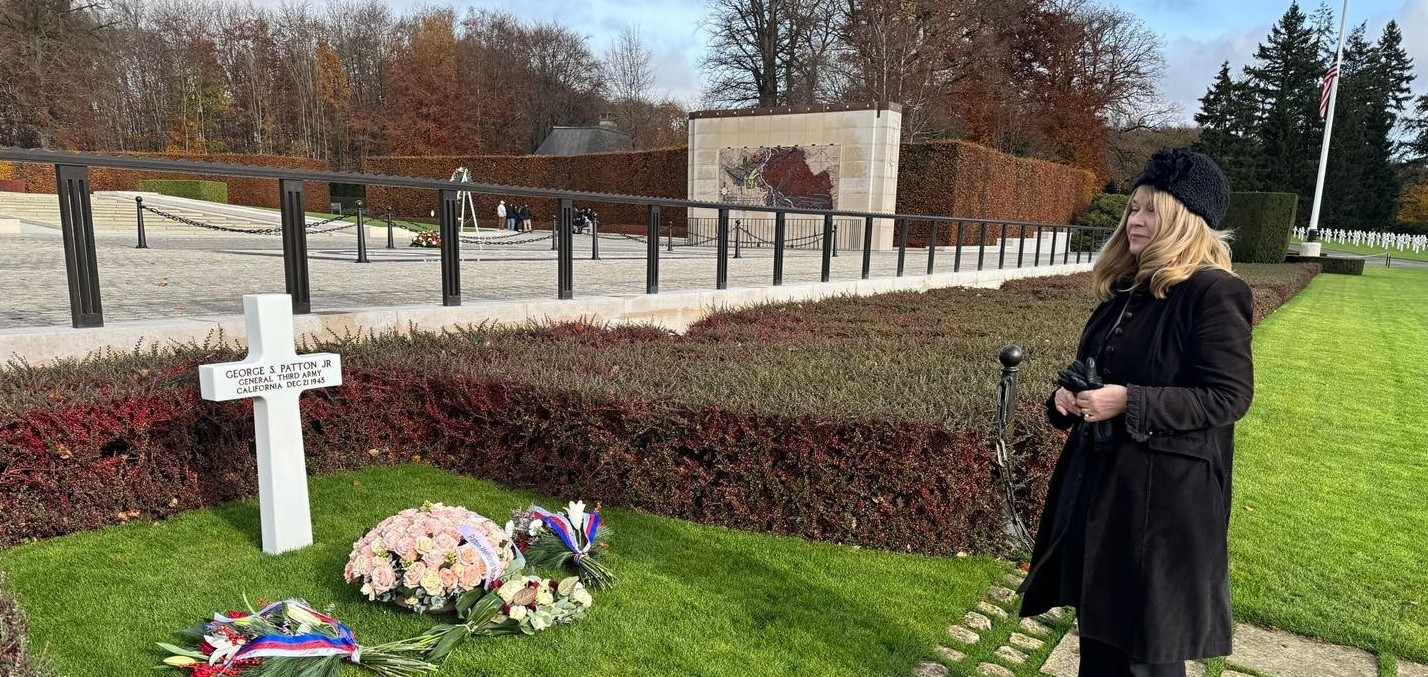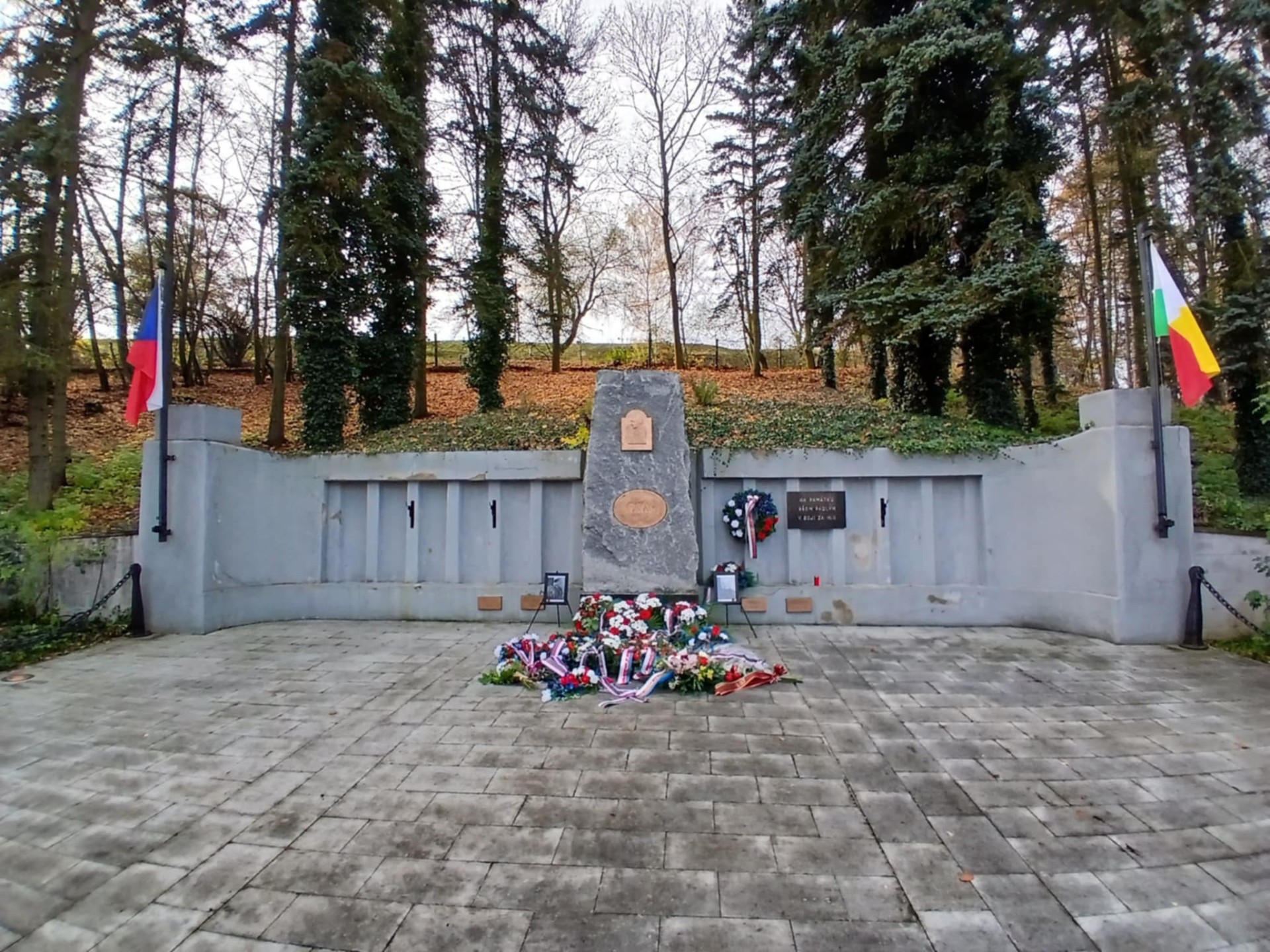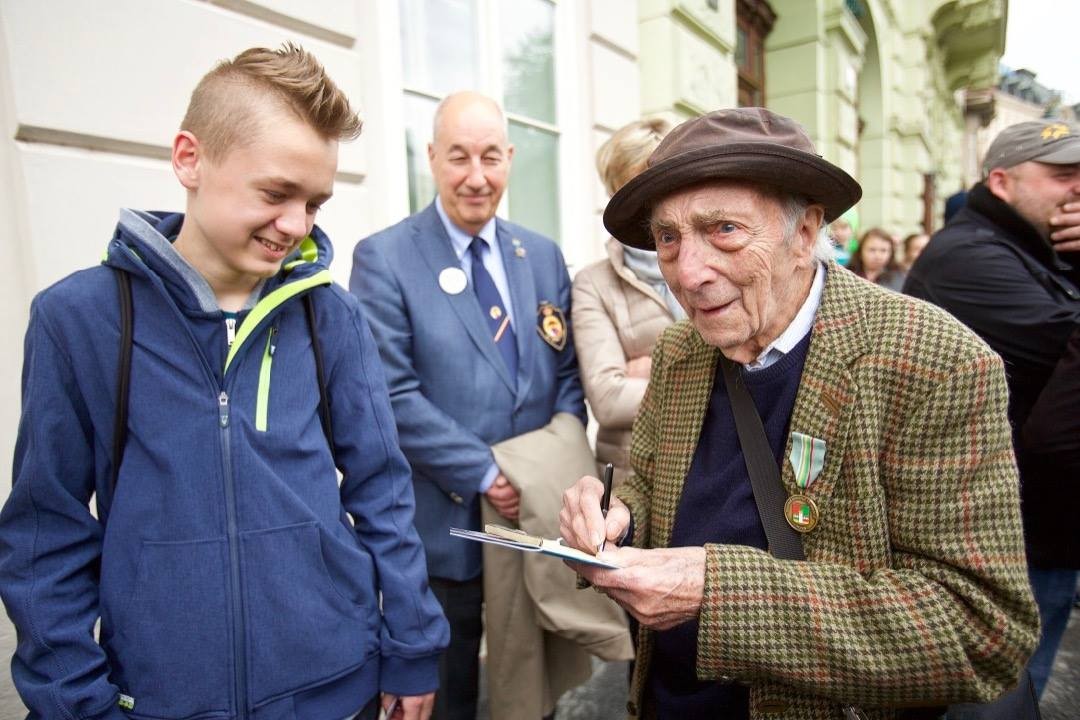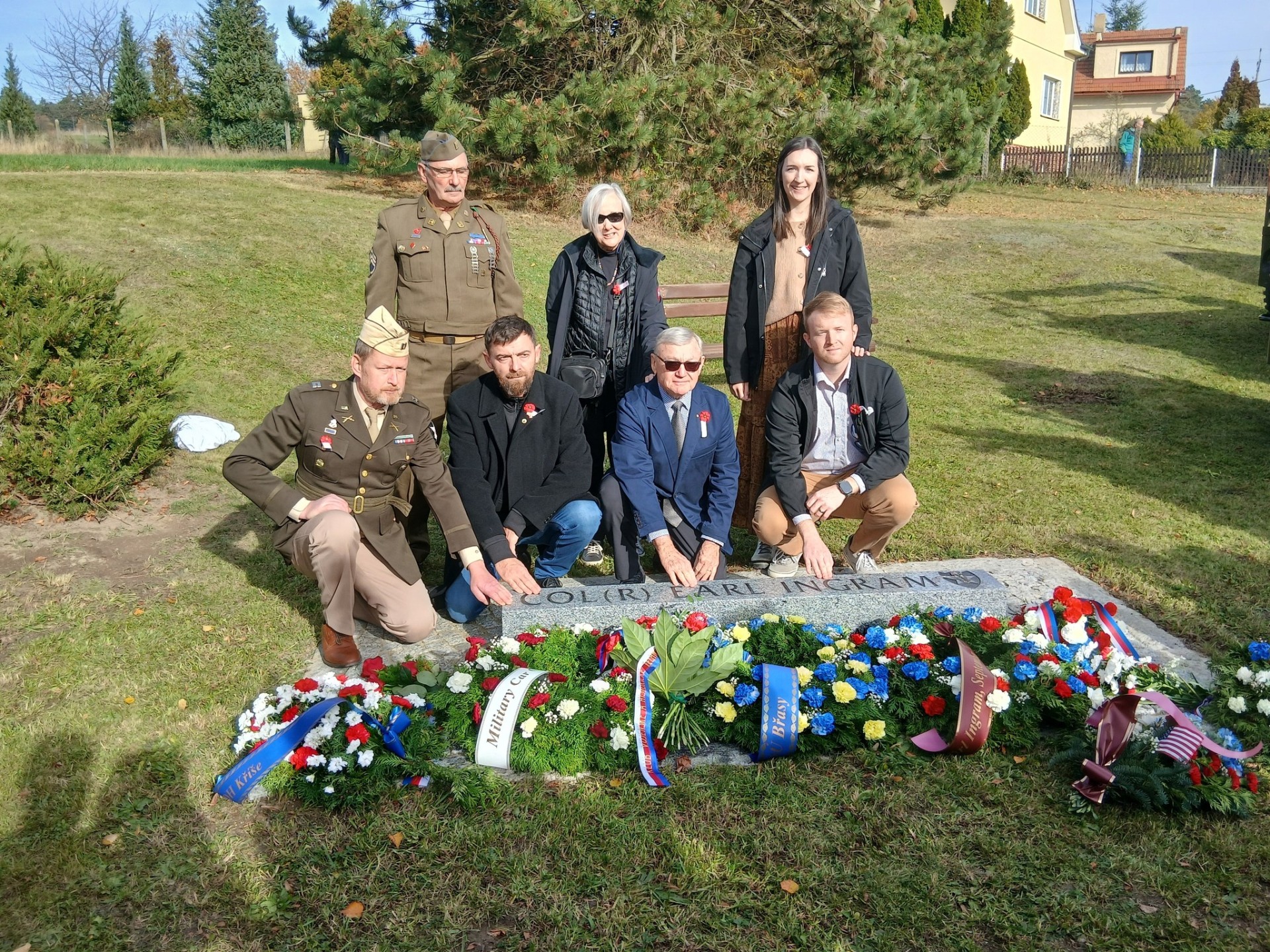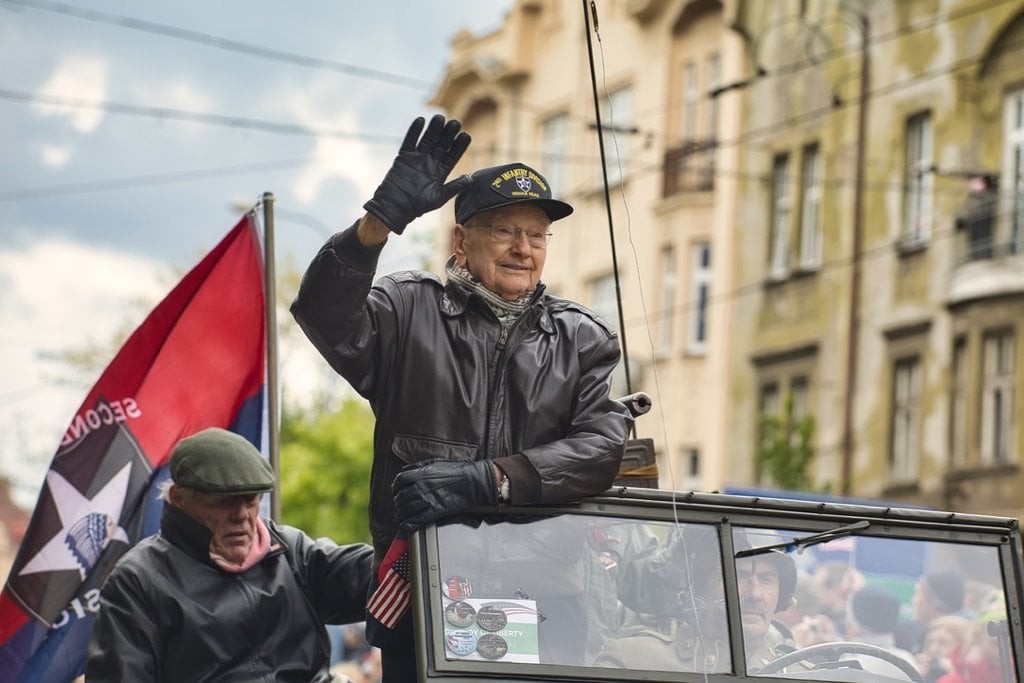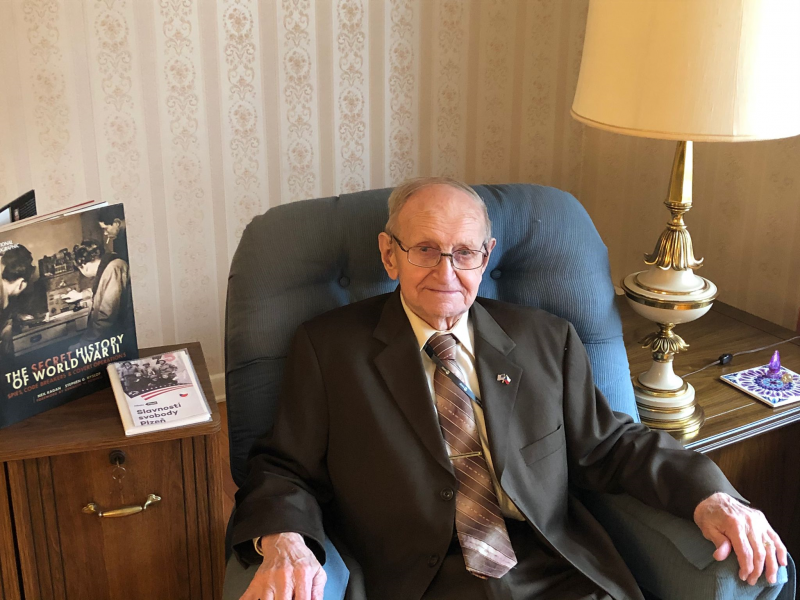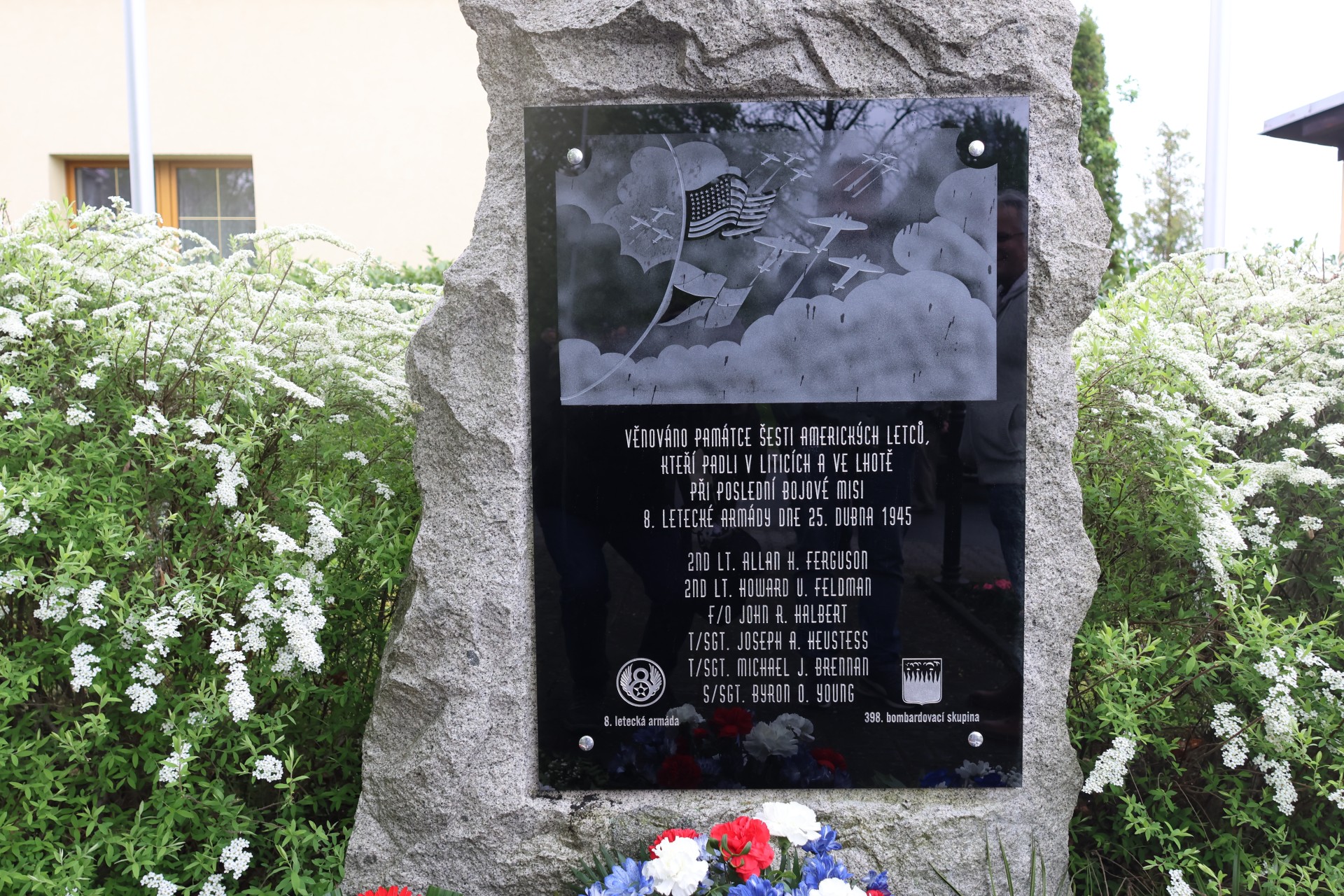

News
Six US airmen who died in the bombing of Pilsen were remembered in Litice
The memory of the American airmen who were shot down on 25 April 1945 during the bombing of Pilsen was commemorated today by people in the Litice district. Only two of the eight crew members of the downed Boeing B-17 bomber, nicknamed the Flying Fortress, lived to see the end of the war. The others died in Litice and in nearby Lhota, where the badly damaged aircraft crashed. A memorial plaque in Litice commemorated the memory of the airmen, but for decades it bore an inaccurate description of the event. The district therefore bought a new plaque this year for CZK 20,000, replacing the incorrect text with the correct one, Litice Mayor Michal Hausner (ANO) told the Czech News Agency today at the unveiling of the plaque and the commemorative ceremony.
307 bombers, accompanied by fighter jets, took off from bases in England to raid the Škoda factories and airfield in Bory on 25 April 1945. 276 "flying fortresses" arrived over Pilsen, most of them aimed at the factory, eighty of them were to drop bombs on the airport. But the German air defences were ready and the planes came under heavy fire. Commander Allan Ferguson's plane was heading for the airfield, but due to bad weather had to cut another arc to drop bombs. In doing so, it was hit by a flak (German anti-aircraft gun) round, Hausner described the situation. Four crew members parachuted out of the plane. Two of them survived and lived long after the war, one was found on the ground by local people with no signs of life, and one was captured by the Germans and shot. The remaining four crew members died in the wreckage of the machine, which landed in Lhota.
A monument to the airmen was erected in Litice right after the war in 1946. However, it was inscribed with a false text. It was based on the tradition in the village that 12 American airmen died here and were killed by the local Germans. Lititz had an overwhelmingly German population and relations during the war and after the expulsion were very tense between Czechs and Germans, said Lititz historian and chronicler Marek Žatkovič.
"It was said that the peasants beat the airmen with agricultural tools. Apparently, this was the result of poor relations between the Czech and German populations in the Sudetenland and the wartime events," the mayor added. With the onset of the communist regime, the memorial plaque commemorating the American airmen was removed and replaced with a quote by Julius Fucik. After the revolution, the monument was restored in 1990 with a copy of the 1946 plaque.
"I can't understand that in all the time since the revolution, none of the Lithuanian mayors minded that it didn't state the truth, even though historians pointed it out," Hausner said. Thus, as of today, the plaque on the memorial bears six names and the text, "Dedicated to the memory of the six American airmen who died in Lititz and Lhota during the last combat mission of the 8th Air Army on April 25, 1945."


